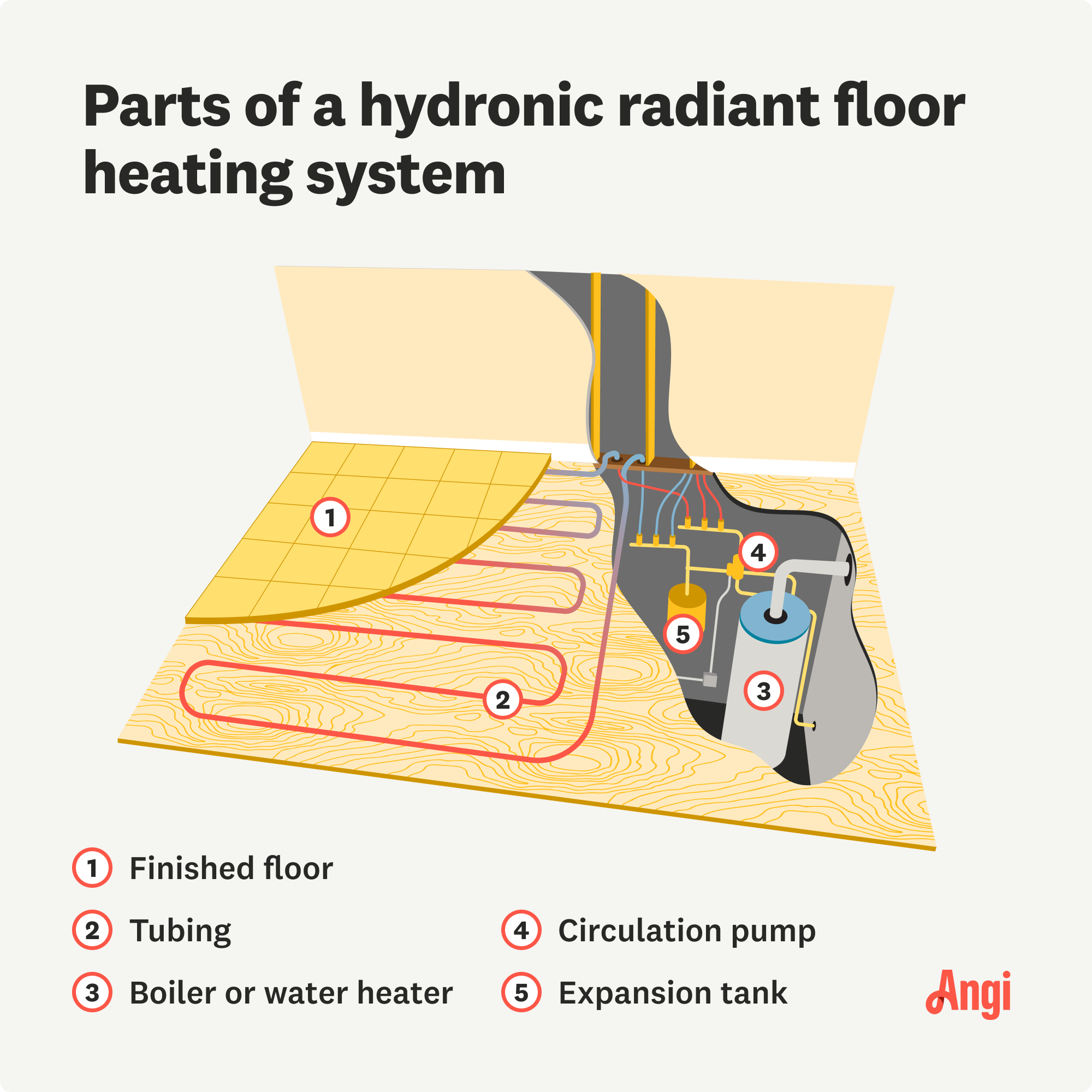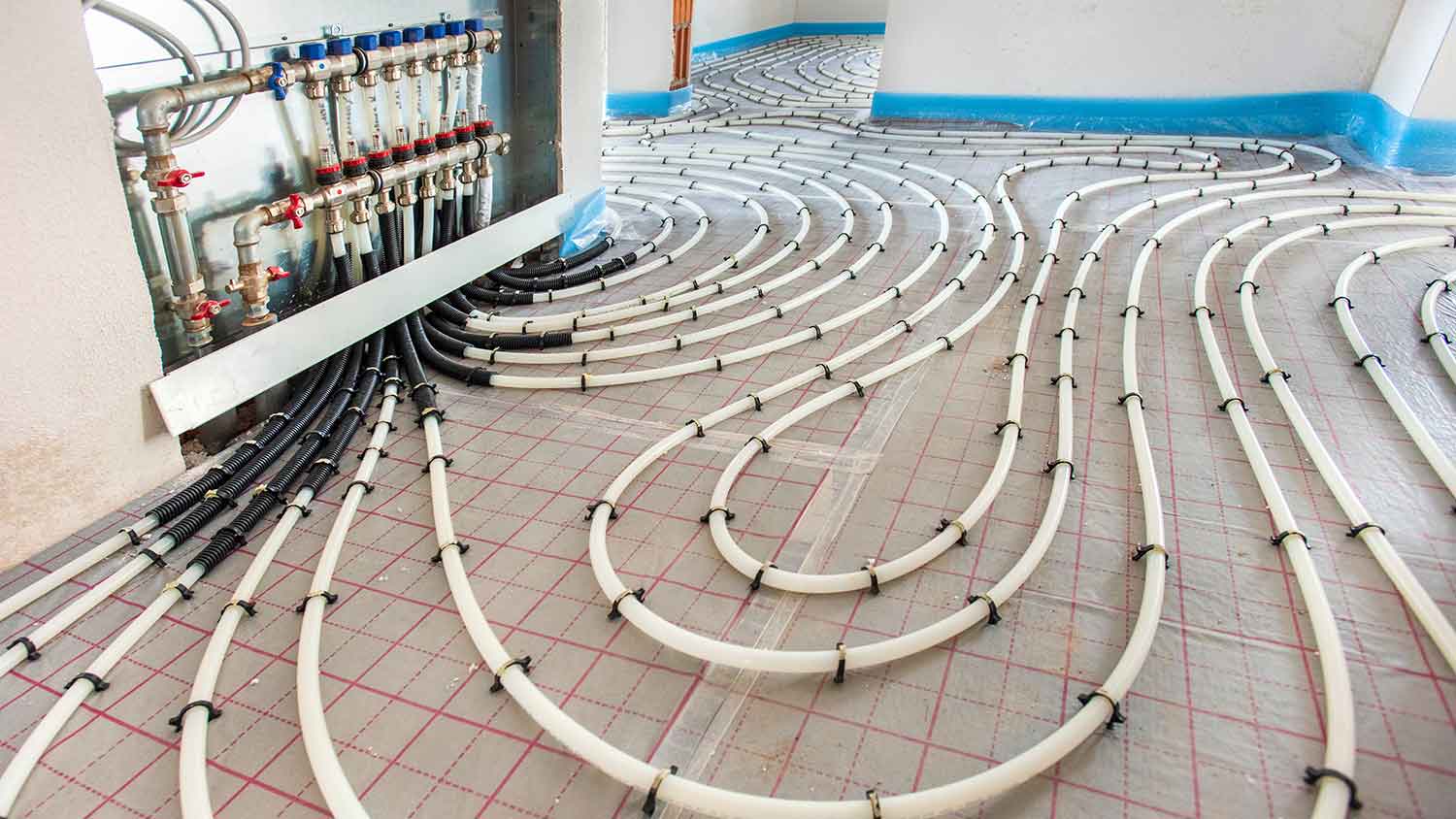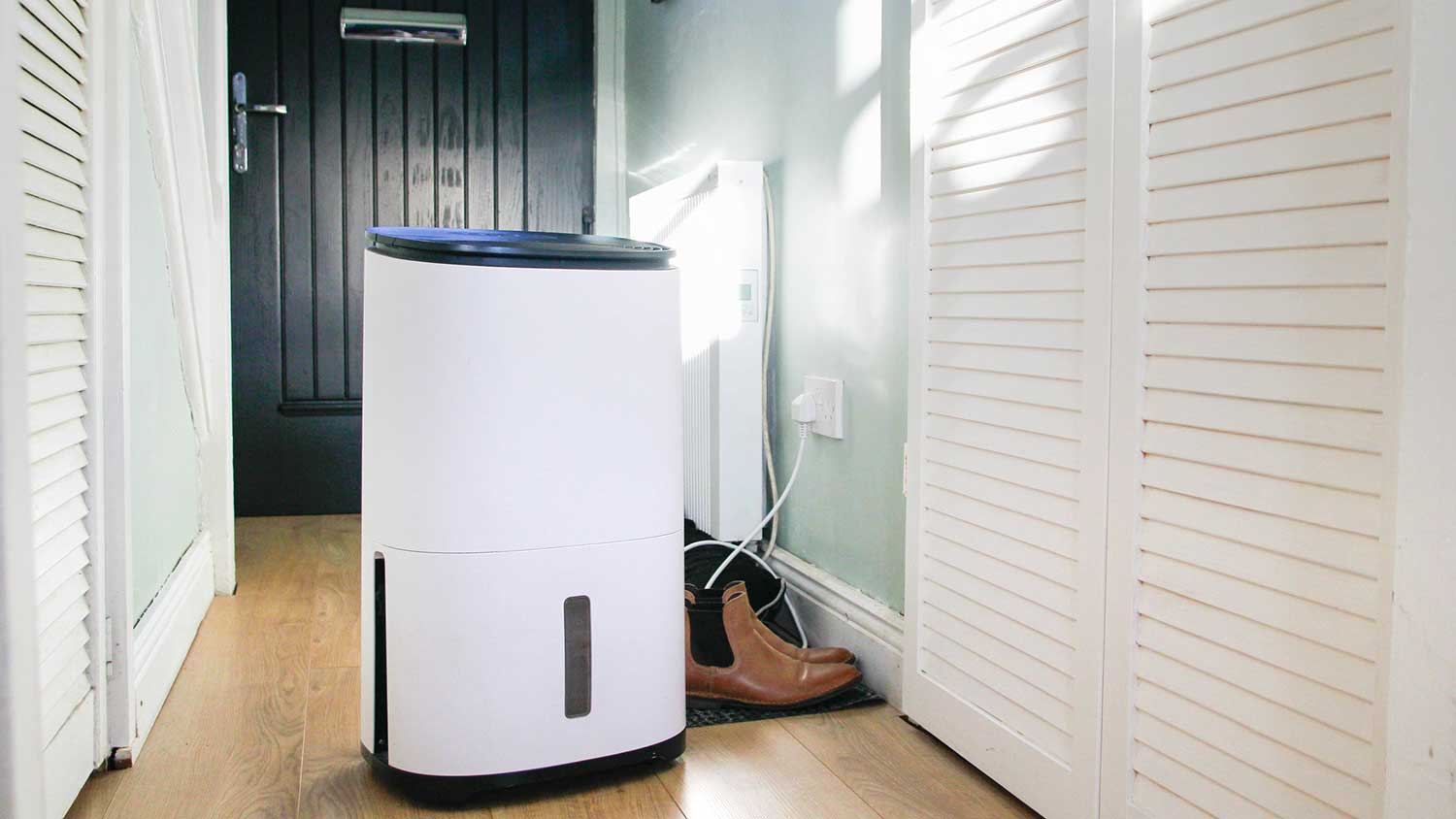What Is a Radiant Heating System? Discover the Pros, Cons, and Different Types
With this system, the heat’s underneath your feet


Radiant heating is an energy-efficient way of heating your home.
There are two main types of radiant heating systems: hydronic and electric.
These systems use hot water or electrical coils to create and transfer heat into your home.
They’re often installed underneath floors but can also go behind walls or above ceilings.
You can use radiant heating to warm individual rooms or your whole house.
Can’t stand your bare feet touching the cold floor on a chilly winter morning? A radiant heating system could be the solution you’ve been searching for. This efficient type of home heating distributes heat quickly and evenly. Plus, it doesn’t use ducts, so it’s allergy-friendly. Read on to learn more about radiant heating systems, including the pros, cons, and types.
What Is a Radiant Heating System?
Radiant heating is a type of home heating system. It relies on radiant heat—or the transfer of heat from a hot surface to a cooler one—to warm up your living space. For example, in the case of radiant floor heating, there are electric wires or hot water tubes underneath the flooring that produce and transfer heat to the flooring above. You can also use radiant heating in walls and ceilings (but it’s most often found under floors to warm up your tootsies on those cold mornings).
How Does Radiant Heating Work?

Each type of radiant heating system functions differently, but the outcome is the same.
In a radiant floor heating system, you’ll find a series of pipes, tubes, or wires that run beneath the floor. They can be configured in several ways, including being fastened to the subfloor, connected to a panel, or embedded into concrete. This tubing system creates heat (either through electricity, hot water, or heated air), which rises, warms up the floors, and transfers into the rest of the room.
The process works similarly in walls and ceilings. However, in these installations, the radiant heating tubes are attached to panels. For wall heating, the panels are installed along the lower portion of the wall.
Types of Radiant Heating System

There are two main kinds of radiant heating systems: hydronic and electric. However, those aren’t the only options.
Hydronic Radiant Heating
Hydronic heating systems are efficient and suitable for whole-house heating. They have a water heater or boiler, which heats up water and sends it through a series of tubes to release heat into your home. It’s possible to add hydronic radiant heating to an existing house, but it’s simpler to install this type of radiant heating system while building a home.
Electric Radiant Heating
Electric systems use electric wires or coils to generate heat. On the plus side, they heat up quickly and are easier to install than hydronic systems. However, electric systems are best used in smaller areas or as a supplemental heating source rather than warming up an entire home.
Other Radiant Heating Options
Aside from hydronic and electric systems, there are a few other radiant heating systems with distinct heat sources available for home heating. These include:
Geothermal: Geothermal systems use thermal energy and heat pumps to disperse natural heat under your floors.
Solar: These eco-friendly systems use energy from the sun to heat your home.
Propane: Propane-powered systems are the most affordable radiant heating option.
Air-heated: These radiant heating systems send hot air through ducts underneath your flooring. As the air rises, it heats up your room. However, these systems aren’t as cost-effective as others, so they aren’t installed in homes very often.
Pros and Cons of Radiant Heating Systems
While each type of radiant heat system has its own pros and cons, there are a few consistent benefits and drawbacks to this type of home heating system.
| Pros | Cons |
|---|---|
| Energy efficient | Some types are expensive to install |
| Distributes heat evenly and quickly | Retrofitting a home with radiant heating can be costly and complicated |
| Quieter than many other heating methods | May increase a floor’s height |
| Doesn’t circulate dust, hair, or allergens | Hydronic systems may leak or cause water damage |
Cost to Install Radiant Heating
On average, installing radiant floor heating costs between $1,600 and $6,600, but prices depend on the type of radiant heating system, the size of the area, and other factors. Here’s how much a local HVAC company might charge to install the most common types of radiant floor heating:
| Radiant Floor Type | Average Installation Cost |
|---|---|
| Hydronic | $19,000–$48,000 |
| Electric | $19,000–$36,000 |
| Geothermal | $9,500–$27,000 |
| Solar | $8,000–$19,500 |
| Propane | $2,400–$2,900 |
Frequently Asked Questions
Ceramic tile is the best flooring for radiant heat systems—and, in particular, radiant bathroom flooring—because it conducts and retains heat well. Plus, it’s inexpensive, available in many colors and sizes, easy to install, and waterproof. Other types of flooring that work nicely with radiant heat systems include laminate, engineered wood, and vinyl.
There’s a good deal of prep work required to install heated floors in an existing home. For example, you’ll need to remove the old flooring and inspect the subfloor. If there are any cracks, gaps, or other damage, you should be prepared to fix them. Also, if the subfloor is uneven or warped, you’ll have to level it. It’s a lot of work—which is why you should leave radiant flooring installation to a professional.





- Furnace Repair
- Air Conditioning Repair
- HVAC Repairs
- Furnace Installation
- Wood & Pellet Stove Repair
- Dehumidifier & Humidifier Repair
- Heat Pump Companies
- Swamp Cooler Repair
- Wood Stove Services
- HVAC Companies
- Commercial A/C Repair
- Geothermal Installation
- Air Conditioning Installation
- Boiler Repair
- 24 Hour Furnace Repair
- Geothermal Repair
- Heat Pump Repair
- Humidifier Installation
- Thermostat Repair
- Thermostat Installation
- Nest Installation
- Heating & Cooling
- Heating Repair
- Furnace Cleaning
- Furnace Tune-Up
- HVAC Technicians
- Subcontractors
- Furnace Maintenance
- Plumbing & Heating Companies
- Wood Stove Inspection
- Mini Split Installation
- Wall Heater Repair
- Duct Installers
- Should You Warm Up to Radiant Bathroom Floor Heating?
- Is a Radiant Barrier Worth the Investment?
- How to Install a Radiant Barrier in 5 Easy Steps
- 5 Alternative Ways to Heat Your Home This Winter
- How to Heat a Garage for the Winter: 7 Must-Know Tips
- Walking on Sunshine: How to Install Heated Floors and Banish Freezing Feet
- Is Baseboard Heat Gas or Electric?
- How to Choose the Perfect Space Heater for Your Room
- 8 Types of HVAC Systems for a Cozy Home Year-Round
- Everything You Need to Know to Maintain Your Heating System Properly










